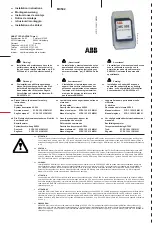
of the data must be weighed against the cost of the system required
to back it up. If the data is important, the cost in system perfor-
mance and the cost of acquisition can be more than justified.
DLTtape systems are ideal for real-time backup because they mini-
mize the drag on system performance caused by continuous
updates.
Near On-Line Storage
Near on-line storage is similar to hierarchical storage management.
It provides a large tape-based repository for information that is
important, but not important enough to take up valuable hard
disk space. It is also good for a set of information that is too large
for the disk space available. Near on-line storage can be provided
by a single high capacity tape drive or by an autoloader or library.
Rather than simply backing up data to tape, and then removing the
tape and storing it in a closet, the information is left in the drive,
where it is available to users.
Depending on the type of near on-line storage system used, it may
take several minutes to locate a file. However, file location and
restoration can be accomplished unassisted, saving time and labor.
Applications for near on-line storage include marketing databases,
backing up multiple servers, report management, image storage,
video on demand, data warehousing and unattended backups.
The DLTtape system is ideal for near on-line storage applications
in which, unlike traditional backup systems, users repeatedly send
information to and from the drive. Inherent reliability, along with
market leading storage capacity and throughput, make DLTtape
systems the perfect choice for this application.
Tape-as-disk is a form of near on-line storage in which you use a
tape drive like you would a disk drive. The tape drive actually acts
as a second or third disk drive. You read and write to the tape drive
HORIZONTAL APPLICATIONS
9.4
Содержание DLTtape DLT 2000
Страница 6: ...vi...
Страница 85: ...QUANTUM DLTtape HANDBOOK 8 5 Figure 8 2 Evolution of Storage Management...
Страница 151: ...QUANTUM DLTtape HANDBOOK 14 3 Figure 14 1 Evolution of Storage Management...
















































